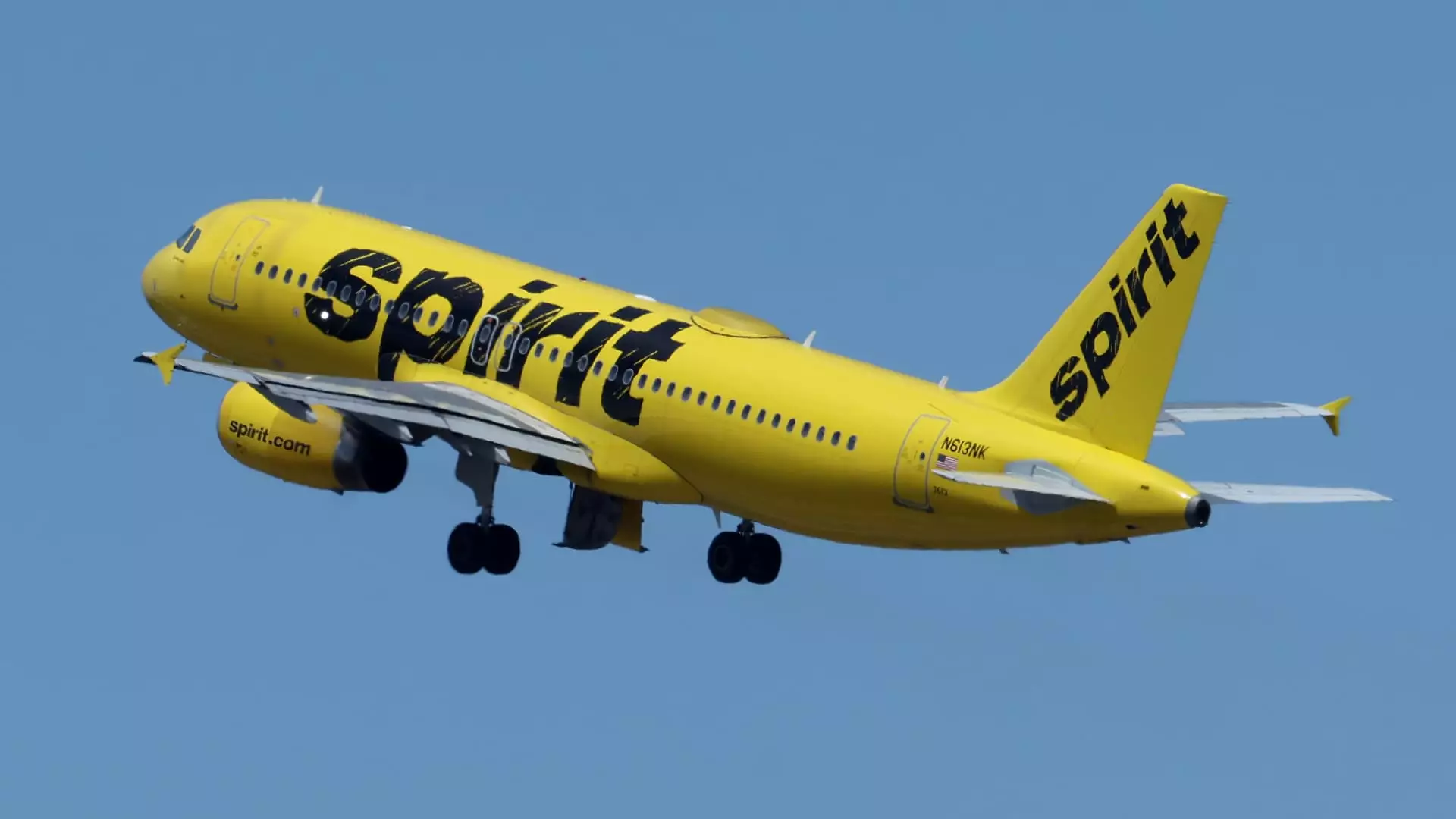In the wake of emerging from bankruptcy protection, Spirit Airlines predicted a swift resurgence, touting bold financial projections and a vision of renewal. Despite a tumultuous 2023 that saw airlines across the industry grappling with decreased travel demand and softening revenues, Spirit’s optimism bordered on overconfidence. The airline entered the post-bankruptcy landscape believing that a quick rebound was inevitable—an assumption that, in hindsight, proved dangerously flawed. The reality, however, revealed a different story: a fragile financial structure that was ill-prepared for the continued turbulence of a declining market.
Rather than confronting the systemic issues within its operations during bankruptcy, Spirit appeared to have adopted a strategy of superficial consolidation. Its management opted for a deal with bondholders, exchanging debt for equity, rather than aggressively renegotiating leases or downsizing its fleet. This decision, though politically expedient at the time, sowed seeds of vulnerability that would inevitably bear fruit as the airline’s cash burn accelerated and market conditions worsened.
Financial Fragility and Cracks in the Foundation
Spirit’s recent financial disclosures paint a grim picture: instead of posting a modest profit as forecasted, the airline reported a staggering loss exceeding $257 million since March. This sharp divergence from prognostications underscores a fundamental miscalculation—an overestimation of the recovery trajectory and underestimation of fluctuating market realities. Such a discrepancy also exposed weaknesses in financial planning and risk management, casting doubt on the airline’s ability to sustain its operations without additional infusions of cash.
Investors responded accordingly, with Spirit’s shares plummeting nearly 58% after warning signs emerged. It’s a stark reminder that appearances can be deceptive; a company emerging from bankruptcy with a clean slate can still be fundamentally broken, if the core issues—like fleet costs and cash flow management—are ignored or inadequately addressed. The airline’s reliance on a high-cost fleet, roughly 200 Airbus aircraft, and the difficulty in securing favorable lease terms exemplifies the structural challenges faced.
Missed Opportunities and Strategic Penalties
Industry insiders criticize Spirit for not exploiting the full potential of Chapter 11 restructuring. Rather than utilizing that window of opportunity to renegotiate leases, shed unprofitable routes, or accelerate asset sales, Spirit appeared to have limited its strategic maneuvering. This reluctance to make tougher decisions set the stage for its current predicament—one where liquidity is strained and the threat of default looms large.
The airline’s reluctance or inability to seize the restructuring tools available—to shed aircraft, reduce lease costs, or streamline operations—mirrored a broader issue: a corporate culture perhaps too optimistic or lacking in decisive action. As aircraft lessors and competitors look on, some even inquire about acquiring Spirit’s aircraft, signaling a systemic recognition of the airline’s deteriorating capacity to remain operational without significant layoffs or asset divestments.
Operational and Market Pressures: The Perfect Storm
Adding fuel to the fire are the external market dynamics that continue to challenge low-cost carriers. A saturated domestic market, coupled with an oversupply of flights, has driven airfare down and squeezed profit margins. Meanwhile, wage inflation following the pandemic has eroded the core advantage of budget airlines—low operational costs. Spirit’s attempt to diversify through selling premium services and bundles, in an effort to attract higher-spending customers, now seems insufficient in addressing underlying cost pressures.
Furthermore, the grounding of aircraft during engine recalls and failed merger negotiations with Frontier Airlines disrupted Spirit’s growth plans and strategic positioning. The failed Frontier deal, which ultimately favored a JetBlue takeover that was blocked by antitrust concerns, deprived Spirit of potential synergies that might have bolstered its resilience. These missed opportunities highlight an overarching corporate indecisiveness and a tendency to squander critical leverage points.
The Future in the Balance: Can Spirit Turn the Tide?
Despite the bleak current outlook, some industry observers argue that dissolution is not inevitable. There are strong incentives for stakeholders—employees, creditors, and communities—to see Spirit survive. The airline’s ongoing efforts to sell assets, trim unprofitable routes, and seek new revenue streams indicate a desire to stabilize. However, these measures may be too little or too late if the fundamental issues—over-leverage, high fleet costs, and cash flow deficiencies—remain unaddressed.
The airline’s fragile state is further underscored by the imminent furloughs and layoffs, which threaten employee morale and operational stability. Union leaders warn of worsening financial health, stressing the importance of strategic adaptiveness amid a challenging low season. The reality is that without a more aggressive and comprehensive restructuring effort—one that involves renegotiating leases, reducing capacity, and fine-tuning its business model—Spirit’s future remains uncertain at best.
A Lesson in Overconfidence
Spirit Airlines’ story is emblematic of the pitfalls of overconfidence and inadequate strategic planning. Its post-bankruptcy optimism, coupled with a failure to confront core operational issues, has rendered it vulnerable amid a volatile industry environment. This case stands as a cautionary tale: in an industry as fleet-dependent and cyclical as aviation, superficial fixes and short-term optimism are insufficient. True resilience requires bold decisions, strategic sacrifices, and an honest reassessment of operational fundamentals.
The airline’s trajectory underscores a vital lesson—balancing optimism with realism is essential. Spirit’s predicament is a testament to the dangers of complacency, especially when external market pressures intensify. Only through decisive action and a clear-eyed acknowledgment of its limitations can it hope to salvage its future or at least mitigate further damage. Until then, Spirit Airlines remains a fragile entity, teetering on the brink of deeper financial distress, its bright yellow planes now symbols of a hard-earned lesson in the perils of overambition without strategic depth.


Leave a Reply